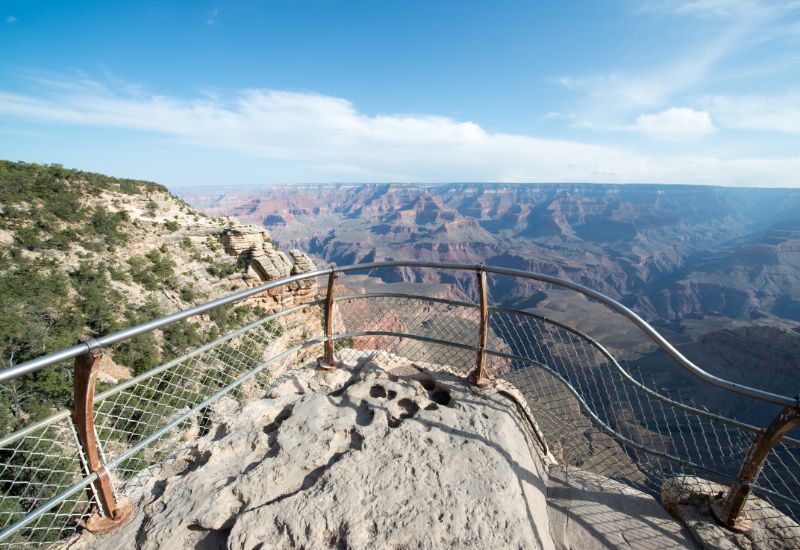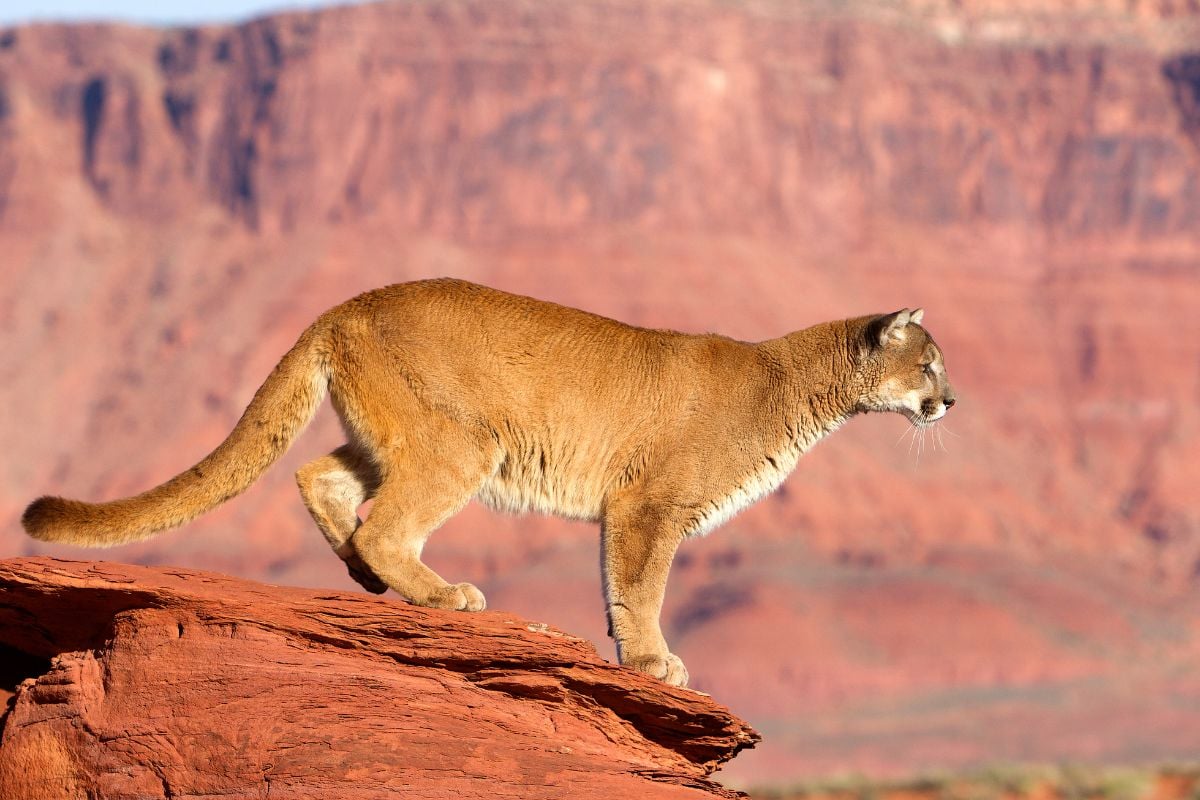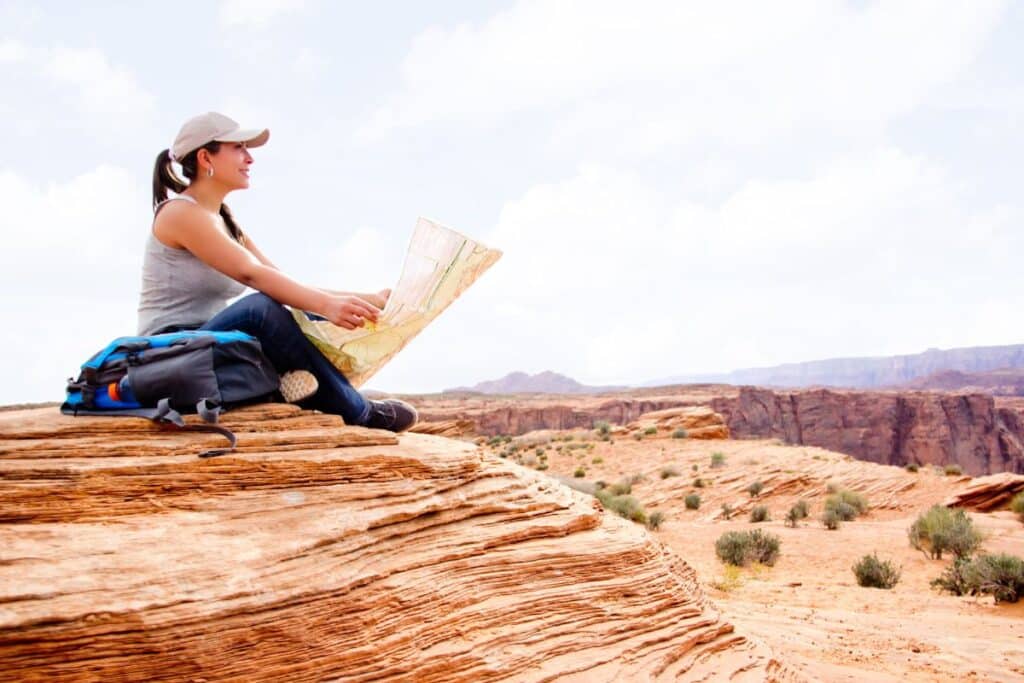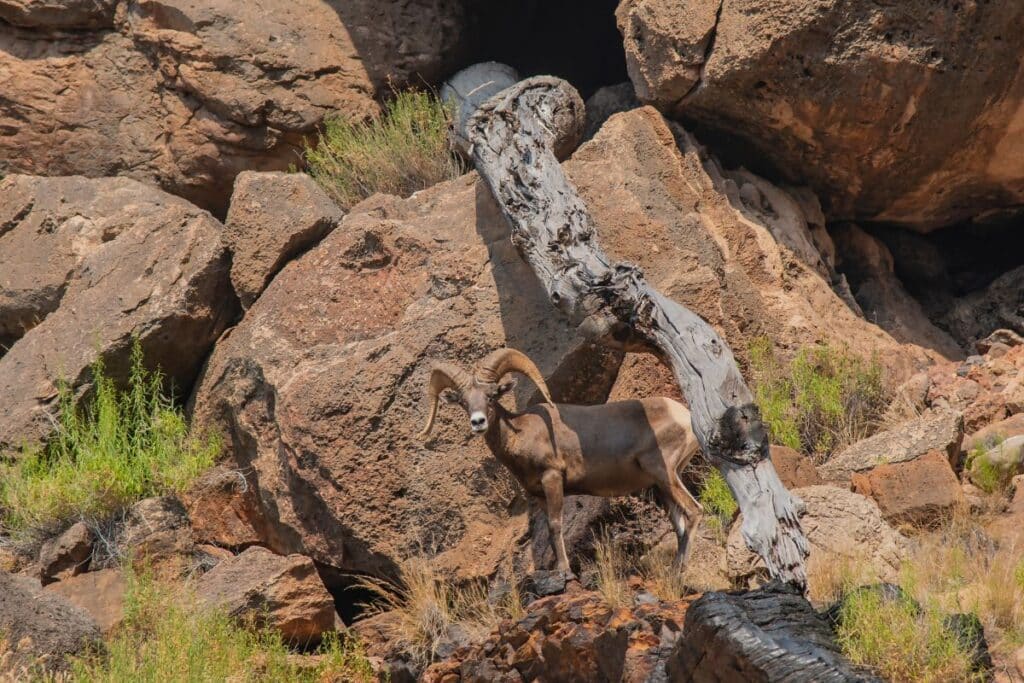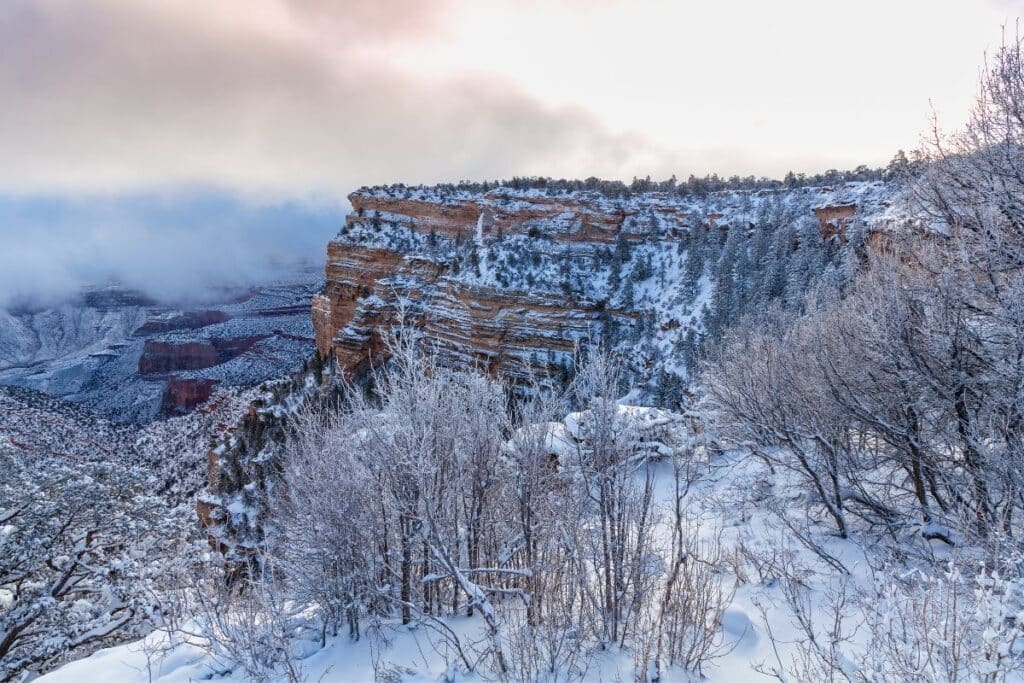Get ready for the most epic two days of your life at the Grand Canyon South Rim! From heart-pounding hikes into the canyon to peaceful sunrises with not another soul in sight – this action-packed itinerary has it all.
Spy California condors gliding over the towering buttes. Discover secret forests and hermit caves as you ride a dusty trail to sunset.
Camp under dazzling skies so bright you’ll swear you can reach out and grab the stars. Hop on twisty shuttles to local-favorite overlooks obscured from common tourist paths.
Picnic at an ancient Indian ruin site with thousand-year-old artifacts waiting to share their secrets.
In just 48 hours you’ll ride, climb, scramble and hike your way across the iconic South Rim. You’ll master stunning panoramas at all hours of the day – and night!
This is no drive-by canyon tour, my friends. Time to lace up your boots and unleash your inner explorer. The Grand Canyon awaits!
Planning Your Trip
Optimal Seasons for Your South Rim Adventure
When planning a trip to the South Rim of the Grand Canyon, timing is everything for an optimal experience.
The most favorable months to visit are April to May and September to November. During these periods, you’ll enjoy milder daytime temperatures, ideal for hiking and outdoor activities, while avoiding the peak summer crowds.
This balance of pleasant weather and fewer tourists enhances the tranquility and accessibility of the park’s attractions.
Summer and Winter Considerations:
Summer (June to August): These months can be intensely hot, with daytime temperatures often soaring.
If visiting in summer, plan activities for early morning or late evening to avoid the midday heat.
Winter (December to March): Winter transforms the canyon into a serene, snowy wonderland.
Though colder, this season offers crystal-clear views and a peaceful atmosphere. Snowy trails and roads can be challenging, so check for closures and be prepared for winter conditions.
Accommodation Options: Comfort and Convenience
Staying in the Village:
The village area is the heart of the South Rim, offering the easiest access to trailheads, viewpoints, and essential services.
It’s the perfect choice for those who want convenience mixed with the excitement of being right at the canyon’s edge.
El Tovar Hotel: For a blend of history and luxury, El Tovar Hotel stands out as the most iconic lodging option.
Opened in 1905, it offers a unique, vintage charm with modern amenities, right on the rim of the canyon.
In addition to the iconic El Tovar Hotel, the Grand Canyon Village hosts a variety of lodging options, each with its unique charm and amenities, ensuring a comfortable and memorable stay.
Maswik Lodge: A perfect mix of nature and convenience, Maswik Lodge is set amidst Ponderosa pines, offering a rustic experience with all modern facilities, a short walk from the Grand Canyon rim.
Kachina and Thunderbird Lodges: Offering modern, comfortable accommodations, these lodges sit directly on the canyon’s rim, ideal for those seeking immediate access to trails and panoramic views.
Yavapai Lodge: Located within a peaceful forest setting, Yavapai Lodge is ideal for nature lovers, offering a quiet retreat with opportunities for wildlife sightings, yet still conveniently close to park services.
Camping in the Park and Beyond:
Mather Campground in Grand Canyon Village:
- Location: Situated within the Grand Canyon Village, Mather Campground offers an unparalleled camping experience right in the heart of the South Rim action.
- Facilities: This campground features over 300 individual sites, each equipped with a fire ring, picnic table, and nearby access to drinking water and restrooms. RV sites are also available, though without hookups.
- Access: It’s conveniently located near shuttle bus stops, providing easy access to various viewpoints and trails, including the Rim Trail.
- Reservations: Highly recommended, especially during peak season (April through November). Bookings can be made up to six months in advance.
- Activities: Ideal for families and hikers, with ranger programs offered in peak seasons.
Kaibab National Forest Campgrounds:
- Location: Just outside the park boundaries, these campgrounds are set amidst the lush Kaibab National Forest, offering a more secluded and natural camping experience.
- Options: The forest hosts several campgrounds, including Ten-X Campground near Tusayan and DeMotte Campground near the North Rim.
- Facilities: These campgrounds offer basic amenities like picnic tables, fire rings, and vault toilets. Some have potable water available.
- Reservations: Some sites are first-come, first-served, while others can be reserved in advance.
- Experience: Perfect for those seeking a quieter, more nature-immersive experience, with opportunities for wildlife sightings, star gazing, and forest hiking.
Both Mather Campground and the campgrounds in Kaibab National Forest provide unique ways to connect with the natural beauty of the Grand Canyon region.
Whether you prefer the convenience and community feel of camping within the park or the tranquility and rustic charm of forest camping, these options cater to a range of outdoor preferences.
Getting There
Most visitors drive to the South Rim entrance located 80 miles north of Flagstaff, AZ either via the south entrance along Hwy 64 or the east entrance along Hwy 89.
- If driving yourself, fill up on gas before entering the park and download offline maps. Cell service is spotty.
- Another option is to take a bus tour or private shuttle service from Las Vegas, Phoenix, or Sedona. This allows you to relax en route.
- You can also take a train ride to the Grand Canyon Railway station in Williams, AZ and then a shuttle or bus from there to the South Rim village.
- The closest major airport is Phoenix Sky Harbor International Airport, about 4.5 hours drive away.
Once in the Park
The South Rim area offers a free shuttle bus system that stops at various overlooks and trailheads in the east and west village areas. These buses run regularly throughout the day and are useful for getting around without a car.
Popular routes:
- Red Route: Runs east/west every 15-20 minutes stopping at the Visitor Center, Mather Point/Yavapai Museum and Hermits Rest.
- Blue Route: Runs every 20 minutes between the Visitor Center and South Kaibab Trailhead.
- Purple Route: Connects the Gateway visitor hub with Tusayan and Grand Canyon Airport.
When should I visit to avoid crowds?
Early spring and fall generally have milder weather and fewer visitors than peak summer months. April, May, September and October tend to be less busy. If you can only visit in summer, try for weekdays.
How difficult are the hikes down into the canyon?
Hikes into the inner canyon tend to be strenuous undertakings with significant elevation changes. Even short hikes to the rim can be tougher than expected. Take adequate time, gear, fitness level into consideration. Start early to avoid hiking in extreme midday heat.
What is the best viewpoint for sunrise and sunset?
For sunrise, try Yaki, Yavapai or Mather Points to watch the changing canyon shadows. Hopi Point and Lipan Point have excellent sunset panoramas year round due to wide angles over canyon.
Is it safe to hike alone?
Generally not recommended. Some trails like Bright Angel have heavy traffic if help is needed, but on lesser used trails, hiking solo significantly increases risk if injured, lost or stranded. At minimum have an emergency beacon.
Can I backpack overnight down the canyon trails?
Yes, but require an advanced Backcountry Permit from the Backcountry Office to camp below the rim and spend a night. Popular corridors book out months in advance. You must plan to purify all water and carry gear for extreme temperature variance in inner canyon.
Where can I see wildlife?
Your best bet is in forested areas on the canyon’s North Rim where elk, black bear, mule deer roam. On the South Rim, watch for condors and ravens floating on thermal winds rising from inner canyon, especially on the Kaibab Trail.
Day 1: Get right into adventures on the south rim
Catching Canyon Dawn at Yavapai
Arrive while it’s still dark out – by 5:15 AM to be safe – to claim the perfect spot along Yavapai Point’s overlook railing. It’s a quick 0.2-mile walk from the parking lot to the precipice, easily navigated by a flashlight through the pre-dawn gloom. Expect temperatures between 28-37°F, so bundle up!
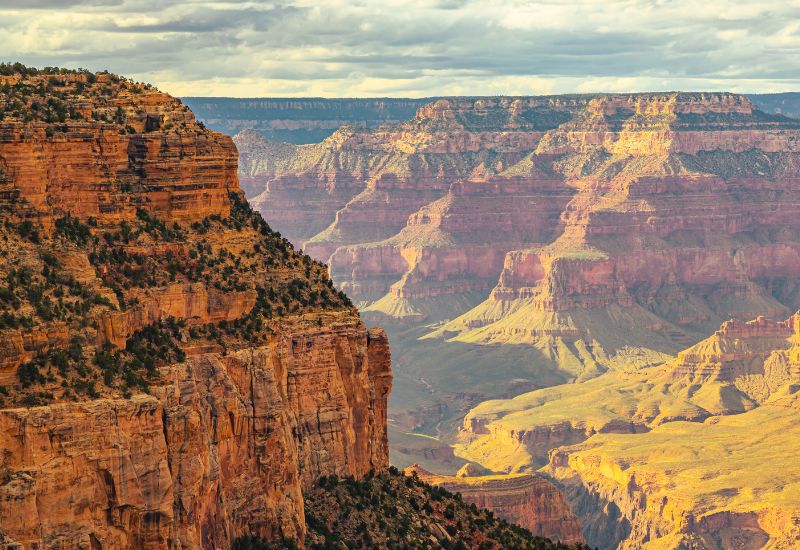
Rest eyes on the still-shadowed canyon contours awaiting dawn’s magic. Sunrise officially peaks over the canyon rim at 5:52 AM in spring, bathing temples and buttes like Vishnu, Freya, and Wotan’s Throne in glowing crimson and gold.
Don’t just dash off afterward! Linger through at least 6:20 AM to appreciate sunlight slowly cascading down the canyon walls, revealing fresh angles.
When you need a warmup, the nearby Market Plaza starts serving hot coffee and pastries at 5:30 AM. Just don’t relax too long or you’ll miss Old Sol’s daily masterpiece!
South Kaibab Trail Trek
Post sunrise, aim to hit the South Kaibab Trail by 6:45 AM. This 7-mile round trip (down to Skeleton Point and back) offers a workout with a view.
The trail descends 2,000 feet, so it’s a bit of a challenge, but totally worth it. Be prepared for temperature swings – it can be 35°F at the rim and 20 degrees warmer at the bottom.
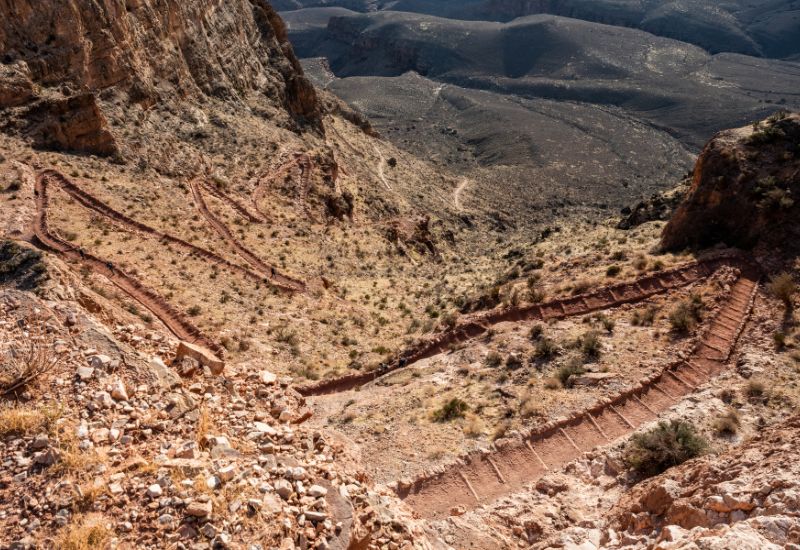
By 8:00 AM, as you traverse the cedar-scented path, keep an eye out for the California condors.
These magnificent birds, with wingspans up to 9 feet, are often seen circling above. Remember to pack about 2 liters of water per person and some high-energy snacks – there are no water facilities on this trail.
Lunch with a View at Monument Creek Vista
After a good hike, you’ll be ready for a break. Head to Monument Creek Vista around 12:30 PM for lunch. It’s a quieter spot, just a 5-minute walk from the parking area.
The vista offers a panoramic view that’s hard to beat. Temperatures hover around 45-55°F, ideal for an alfresco meal. Pack a picnic, or grab a sandwich from the nearby Market Plaza before you head out.
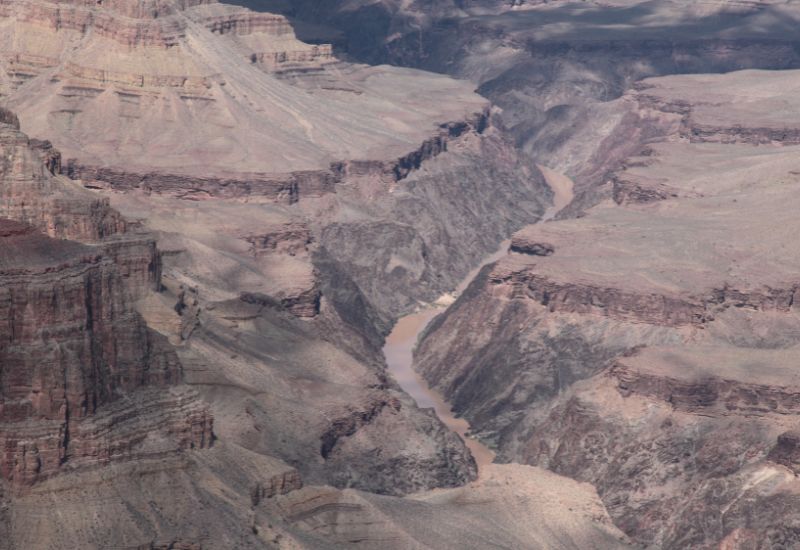
Afternoon Stroll on the Rim Trail
By 2:00 PM, you’ll be rejuvenated for a gentler walk on the Rim Trail. This mostly flat trail offers some of the most jaw-dropping views of the canyon.
Start at The Abyss, a sheer drop that’s both thrilling and terrifying, then head towards Mohave Point.
The walk is about 3 miles and takes you past some of the best lookouts. If you’re lucky, you might spot some mule deer or even a coyote.
Sunset and Stars at Hopi Point
Wrap up your day at Hopi Point for sunset, which happens around 6:30 PM in the spring. It’s a popular spot, so get there by 5:45 PM to snag a good viewing spot.
As the sun dips, watch the canyon walls light up in shades of orange and pink. It’s chilly as the sun sets (around 30°F), so bring a warm jacket.
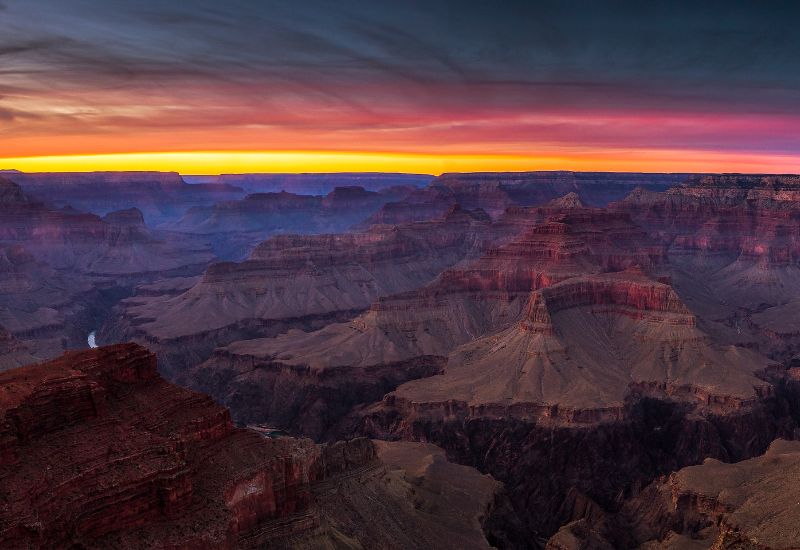
After sunset, if you’re up for it, join one of the free astronomy programs offered by the park. These start around 8:00 PM and are a fantastic way to cap off the day, stargazing and learning about constellations.
Pro Tips for Day 1:
- Stay Energized: Eat a hearty breakfast before you start and keep snacks handy.
- Dress in Layers: Mornings are cold, but it warms up quickly.
- Stay on Track: Keep a map handy – cell service is spotty at best.
- Stay Hydrated: Drink water regularly, even if you’re not thirsty.
- Capture the Moments: Keep your camera ready for those unexpected views.
This day-one itinerary offers a blend of adventure and relaxation, with plenty of opportunities to soak in the natural beauty and majesty of the Grand Canyon’s South Rim.
Whether you’re hiking, picnicking, or stargazing, each activity is designed to create lasting memories of this iconic landscape.
Day 2: of your Grand Canyon South Rim adventure
Morning Hike Down Bright Angel Trail
Kick off Day 2 with an early start at 6:00 AM, hitting the Bright Angel Trail. This trail offers a slightly different experience than South Kaibab.
Plan to hike down to Indian Garden, which is a 9-mile round trip.
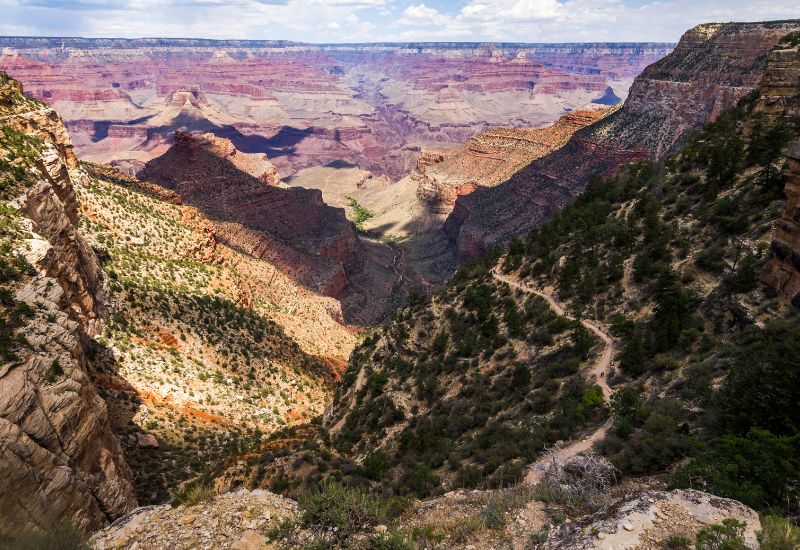
The descent is about 3,040 feet, so prepare for a moderate hike. Along the way, you’ll pass through layers of geological history, and if you start early, you might catch sight of some mule deer or bighorn sheep in the cooler hours.
Remember, it can be around 30°F in the morning, so dress in layers.
Mid-Morning: Exploration at Indian Garden
Arrive at Indian Garden around 9:00 AM. This area is a lush oasis, contrasting the surrounding desert landscape.
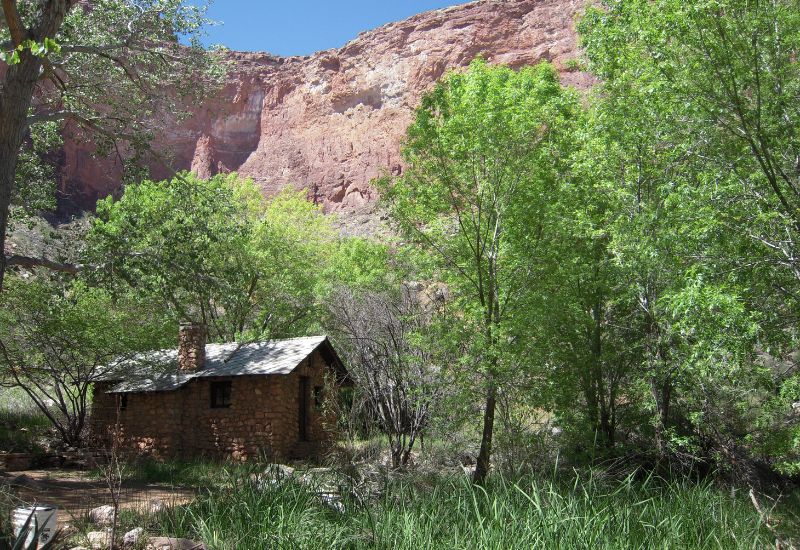
It’s a perfect spot to rest and enjoy some snacks. The canopy of cottonwood trees offers a cool respite. Don’t forget to refill your water bottles here.
Return Hike and Lunch at Rim
Start heading back up around 10:30 AM to reach the rim by 1:00 PM. The hike up is challenging, but the changing views keep it interesting.
Once at the top, head over to one of the rim cafes for a well-deserved lunch. The El Tovar Dining Room is a great option, offering hearty meals with a view.
Afternoon: Scenic Drive to Hermit’s Rest
Post lunch, around 2:30 PM, take a scenic drive or shuttle ride to Hermit’s Rest. This 7-mile journey along the rim offers multiple stops at scenic overlooks like Maricopa Point, Powell Point, and Hopi Point.
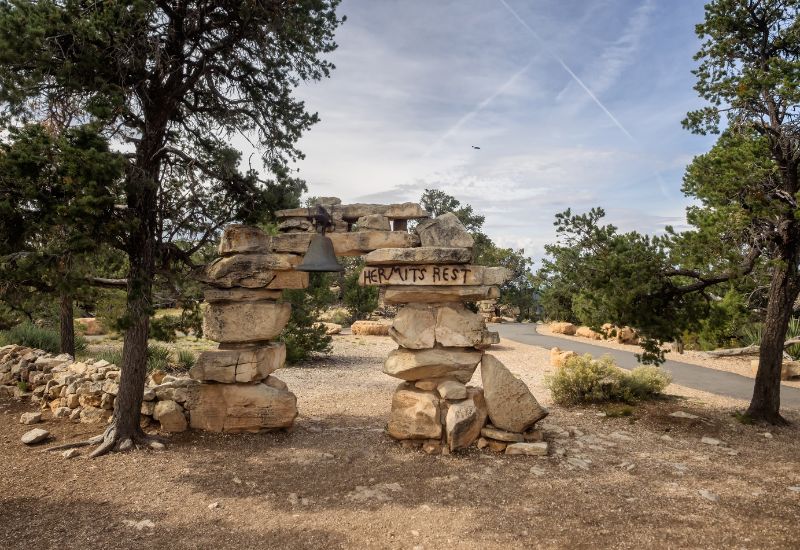
Each point offers its unique view of the canyon. The road ends at Hermit’s Rest, where you can explore a historic building and enjoy views of the Colorado River.
Late Afternoon: Rim Trail Walk and Cultural Sites
On your way back, around 4:00 PM, take a leisurely walk along part of the Rim Trail and visit some cultural sites like the Kolb Studio, a historic photography studio with exhibitions.
This period is also excellent for spotting wildlife, as animals become more active in the cooler late afternoon.
Evening: Sunset at Yavapai Point and Stargazing
Finish your day at Yavapai Point for sunset, which is around 6:30 PM. This point offers a different sunset experience compared to Hopi Point.
After the sunset, if you’re still up for it, engage in some stargazing. The Grand Canyon is known for its clear night skies, making it an ideal spot for astronomy enthusiasts.
Pro Tips for Day 2:
- Start Early: Beat the heat and crowds on the Bright Angel Trail.
- Pack Adequately: Extra snacks and water for the trail.
- Wear Comfortable Shoes: Ensure good grip for the hike.
- Take Breaks: Regular stops on the ascent to stay energized.
- Enjoy the Journey: Take time to absorb the views and nature.
This second day offers a blend of physical activity, scenic beauty, cultural exploration, and relaxation.
Each activity is thoughtfully selected to provide a comprehensive experience of the Grand Canyon’s South Rim, leaving you with a sense of accomplishment and awe at the natural world’s wonders.
Wildlife Around the South Rim
Exploring the South Rim of the Grand Canyon is not just about the stunning landscapes and geological wonders; it’s also an opportunity to encounter a diverse range of wildlife in their natural habitat.
The South Rim, with its varying elevations and ecosystems, is home to an array of animals, each uniquely adapted to the desert environment.
Mammals: Majestic and Elusive
- Elk: Frequently spotted in the early mornings or late evenings, these large mammals are a majestic sight. They’re often seen grazing near the rim or along the forested areas. Remember to keep a safe distance, as they are wild animals.
- Mule Deer: These deer are more commonly seen than their elk counterparts. Look for them in wooded areas or near water sources. Their large ears and bouncing gait make them easily recognizable.
- Bighorn Sheep: These agile creatures are a rare treat to spot. They tend to stay in the rocky and steep areas of the canyon, so keep your eyes peeled, especially when hiking the trails.
Birds: From Songbirds to Predators
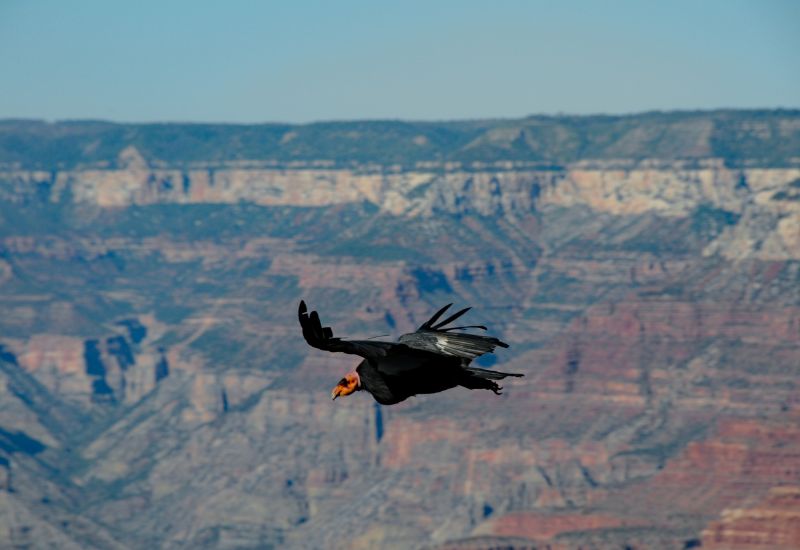
California Condors: Perhaps the most spectacular bird sighting at the Grand Canyon is the California condor. These critically endangered birds, with wingspans reaching up to 9 feet, can often be seen soaring above the canyon, especially near Yavapai and Yaki Points.
Peregrine Falcons and Ravens: Other notable birds include peregrine falcons, known for their incredible speed, and the intelligent ravens, often seen playing in the wind currents along the rim.
Reptiles and Amphibians: Masters of Survival
Lizards and Snakes: The South Rim is home to various lizards and snakes, including the harmless whiptail and side-blotched lizards. While snakes are less commonly seen, rattlesnakes do inhabit the area, so always be cautious and watch your step.
Amphibians: After rain, you might hear the chorus of canyon tree frogs, especially near water sources like Indian Garden.
Insects and Arachnids: Small but Fascinating
Tarantulas and Scorpions: While they might seem intimidating, tarantulas and scorpions are fascinating creatures to observe. They are more active in the warmer months, so be cautious when sitting on rocks or near crevices.
Pro Tips for Wildlife Watching:
- Bring Binoculars: Enhance your viewing experience, especially for birds and distant wildlife.
- Stay Quiet: To increase your chances of seeing wildlife, move quietly and keep conversations low.
- Respect Wildlife: Keep a safe distance and never feed or try to touch the animals.
- Be Patient: Wildlife sightings can be a matter of being in the right place at the right time.
- Stay on Trails: For your safety and the protection of habitats, always stay on designated paths.
The wildlife at the South Rim offers an additional layer of excitement and wonder to your Grand Canyon experience. Whether you’re an avid birdwatcher or just enjoy the occasional wildlife sighting, the South Rim’s fauna will surely enhance your visit.
Remember, these animals are wild and should be respected as part of the incredible ecosystem of the Grand Canyon.
Recommendations to Include on a 2 Day Grand Canyon Adventure:
Incorporating a helicopter tour into your South Rim adventure at the Grand Canyon offers an unparalleled perspective of this natural wonder. Here are some exciting options:
- 45-minute Grand Canyon Helicopter Tour from Tusayan: This tour provides an overhead view of the South Rim’s breathtaking landscapes, including the Dragon Corridor and the Tower of Ra. The pilot’s commentary enhances the experience with historical and geological insights.
- North Canyon Helicopter Tour with Optional Hummer Adventure: Ideal for exploring lesser-known areas of the canyon, this tour offers stunning views of the North Rim and the Colorado River. The optional Hummer adventure adds an off-road element, allowing deeper exploration and unique views.
- Grand Canyon EcoStar Helicopter Tour: Available in 25 and 45-minute options, this tour showcases the deepest and widest parts of the canyon, including the North Rim. The descent into the canyon provides a dramatic and close-up view of its sheer walls and unique formations.
- Grand Canyon Helicopter 45-Minute Flight with Optional Hummer Tour: This aerial sightseeing adventure covers the Colorado River, North and East rims, Imperial Point, and Dragon Corridor. The additional Hummer tour explores the Kaibab National Forest and the Desert View Watchtower, offering a comprehensive ground and air experience.
Each of these tours offers a distinct and exhilarating way to experience the Grand Canyon, adding a memorable dimension to your South Rim visit.

